The island of Cuba in the Caribbean Sea was inhabited by Amerindians when Columbus landed in the fifteenth century. Most anthropologists believe that the indigenous culture had some similarities to that of the Mayans of Mexico and Central America. Although Cuba became a Spanish colony, it did not appear to have many natural resources, so the Spanish did not pay much attention to it at that time. But, in the 17th century, a large increase in European immigrants to the New World during a period of intense competition for maritime superiority and the rising demand for cash crops resulted in a need for a large labor forces to work on the land. The slave system in the New World was born. The city of Havana became a location where British and Spanish traded and transferred slaves.
Following the United States' independence in 1776, trade took off between the U.S. and Cuba. In order to satisfy the growing demand for sugar during the 1800s, Cuban plantations expanded along with the number of slaves. By the nineteenth century, the upper class of the New World had incorporated tea drinking into daily life. The slightly muddy taste of beet sugar could not compete with cane sugar. The use of cane sugar became a symbol of wealth and social status. This could be observed in the expensive silver tea sets of the time, which included large sugar containers.

An American silver tea service set
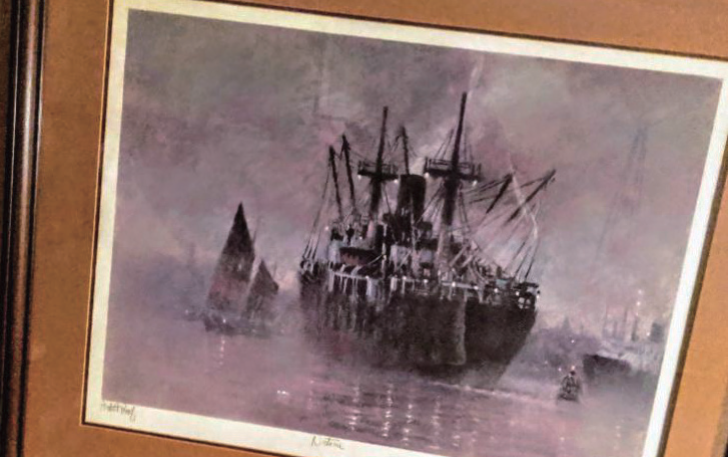 The cargo ship The figure shows a cargo ship in Hong Kong harbor around 1850. Most cargo ships at that time were wooden-hulled with steam engines. |
 An oil painting of a cargo ship by J. C. Head, c.1850 The painting shows an English merchant ship (another name for a cargo ship or container ship) named The John Wood approaching Bombay (Mumbai), India. |
In the Spanish colonies, following the passage of 1807’s “American Act Prohibiting Importation of Slaves," Spain had abolished slavery in all its colonies in 1811. However, the laws were not enforced in Cuba, Puerto Rico, and the West Indies. It was not until the “Constitution of 1845" of Spain during the reign of Queen Isabella the 2nd (1830-1904) from 1843 to 1868 and the issuing of a Royal Decree in 1854 that the laws were enforced.

The 1807 “Act Prohibiting Importation of Africans to be Enslaved”
Off the coast of China, there are two small islands on the west side of the Pearl River Estuary, Taipa and Coloane. These two small islands were like "double doors" to the coast. Based on this, the Chinese named the place “Aomen,” translated as “bay gate.” Today, these two islands are connected. They became Chinese territories in the early Qin Dynasty (221-227 BC). At the end of Song Dynasty, when Genghis Khan invaded southern China, many people escaped to these islands, and a famous article written by Wen Tian-Xiang ( 文 天 祥 過 零 丁洋 記 ) in 1278 spoke of this place. Because it is along the "southern silk road, " people on the islands had been dealing with foreigners since ancient times. But, for the most part, the islands were quiet, with small fishing villages. They were called “Macau" after the small temple of "Mazu," or the Hokkien deity( 客家語馬祖 ) Lin Moniang( 林默娘 ), who was the goddess of the sea. The Portuguese rented Macau for 500 reals (the Portugese unit of currency during the Age of Exploration) in 1557. However, it was only officially included on a Portuguese map after 1887. In 1999, it was returned to China, marking the end of colonization in the region.

Wen Tianxiang
The Duke of Wen Xin( 文 信 公 )was a Chinese poet and politician in the last years of Southern Song Dynasty. His famous articles included "Zheng Qi Ge," ( 正 氣 歌 )meaning “positive song,” and “Crossing the Ling-Ding Ocean” (過零丁洋). His most famous lines were from the Chinese version of this article written in 1278.
The Portuguese established a navigation school during China's Ming Dynasty in the sixteenth century to teach missionaries and businessmen about the Chinese language and culture. Gradually, Macau became the connection between China and the western world. Today, the islands are connected by land and make up the world's largest gambling center.
The mid and late nineteenth century was a very eventful time in China. The first Opium war lasted from 1840 to 1842 and the second from 1856 to 1860. The country was ruled by the Xianfeng Emperor from 1856 to 1860, followed by nearly half a century of control by the Empress Dowager Cixi from 1861 to 1908( 咸豐皇帝和慈禧太 后 ). The Taiping Heavenly Kingdom( 太 平 天 國 ), an oppositional state, rose in southern China. Instability, riots, and poverty were common there. In Japan, the beginning of the Meiji era and the end of feudalism led to modernization. The seas were still under the control of the British in the west, but the abolition movement and the industrialization of the cotton industry, among other factors, led to the American Civil War (1861-1865).

The Coolie Imports from 1847 to 1874 to Cuba
The official records of the Cuban government from 1847 to 1874 show the direct relationship between sugar product ion and the numbers of imported African slaves and Coolies.The slave trade ended in 1866 and the coolie trade ended in 1874.
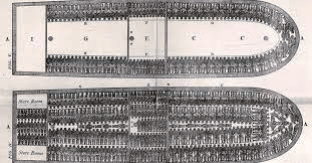



Profile of a slave ship
The slaves were usually transferred during the “middle passage” across the Atlantic Ocean in a cargo ship. To prevent the possibility of riots, the slaves were chained in cramped quarters and given limited food and water. They were forced to dance on the deck for an hour daily to keep them fit.
 Slave Ship Diagram |
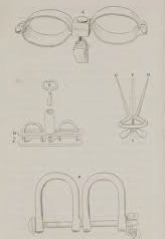 Discipline Aboard Slave Ships |

A 1997 issued medal confirmed the arrival of Chinese to Havana
The illegal slave trade slowed down in the 1830s due to high costs and opposition to slavery, and the Civil War brought the end to such trade. Yet, there was still a high demand for labor, so the British and the Spanish slave ships moved to the so-called coolie market in Southern China to look for laborers for the sugar plantations in Cuba. Since transferring slaves by sea was illegal, a “contract worker” system was created. The workers were indentured laborers who were exploited and treated poorly. As early as 1830, a small number of indentured laborers from China entered Southeast Asia and the Americas through this system. But amid the social unrest of China due to the Taiping Heavenly Kingdom in the mid-to-late 1800s (when China was controlled by the Xianfeng Emperor and the Empress Dowager Cixi), a great number of Chinese workers were sold from Macau to Cuba, Peru, and Southeast Asia between 1852 and 1874.
According to the official records of Cuban government, at least 250,000 Chinese workers, mostly from coastal areas like Guangdong, Fujian, Hong Kong. and Taiwan, were sent to Cuba. About half of these workers were sent to the sugar plantations of Cuba. Less than ten thousand survived life on the plantations and obtained official residence. Laborers faced cruel living environments from the moment they boarded the ships. They were chained together and given very little water and food. At least ten to fifteen percent died during the 130-day journey. After their arrival in Havana, they were auctioned off, much like African slaves were. The majority died on the plantations as a result of the dangerous work, mistreatment, poor living conditions, lack of food, and diseases such as malaria, dysentery, and influenza. Many were forced to work beyond the years in their contract.
Although first 800 Chinese arrived Cuba in 1847 to serve the booming sugar industry and 571 worked on the plantations, the issuing of the decree in 1854 prohibiting the import of slaves played a role of the increasing number of coolies after 1858.
Many coolies were treated similarly to the African slaves. The situation became so concerning that the imperial China sent investigators to Cuba in 1873 to examine the circumstances. A large number of suicides of Chinese workers resulted from the abuse and breaches of contracts by plantation owners. Along with the queen's decree, the Carlist Wars of Spain, Cuban Independence, and the Ten Years’ War, the coolie trade was legally prohibited in 1873. However, historical documents revealed that the trade continued beyond this.
From 1868 to 1878, the Ten Years' War was fought Cuba. This was the first of a series of liberation wars fought by Cuba that ultimately ended with independence after the Spanish-American War in 1898. Cuban employers sent their workers out to fight for their own interests. After the Ten Years’ War, some coolies who fought obtained freedom and became citizens. After the war, the amount of sugar exported by Cuba was greatly reduced as well. After gaining freedom, some former coolies were eager to return to China, but because of the high travel expenses, most stayed in Cuba and continued to work in the fields.

Ten Years'War of Cuba
The war (1868-1878) was also known as the Great War of 1868 and was part of Cuba's fight for independence from Spain.
At the end of 19th century, the Spanish-American War began, and Cuba gained independence and became a U.S. protectorate and the Philippines became a U.S. territory. There are still some American military and maritime bases in these two countries today.
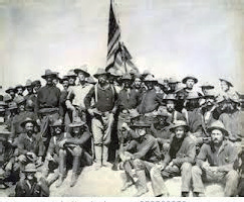
Spanish-American War of 1898
The conflict between Spain and the United States started with the sinking of the USS Maine in Havana in 1896. It ended in American victory and the signing the Treaty of Paris of 1898.
When the British introduced the steam engine into the manufacturing of sugar, some coolies and former coolies were able to master this machinery and manage other workers. Some of the former coolies who gained independence were classified as white and were able to get higher salaries. And some obtained higher social status through marriage to locals.
But, for most coolies, independence did not come until after Mr. Li Hung Chang’s visit to the American Congress in 1891 and the Spanish-American War in 1896. Mr. Li and his student Mr. Yu Shi Yi, the Chinese Counselor in Cuba at that time, raised awareness of the exploitation of Chinese laborers (refer to the 13th issue).
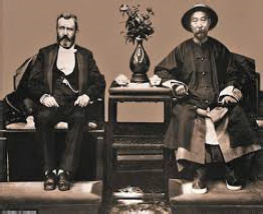
Li Hung Chang and American President Grant(left)
Reference to the 13th issue of JEAN

The route of the Coolie trade from Macau to Cuba
After the Spanish-American War, Cuba finally gained independence. America gained control of Puerto Rico, Guam, and the Philippine Islands. To this day, Puerto Rico and Guam are U. S. territories.
When Cuba was first under the control of Castro in 1950s, many Chinese people, most of whom were Hakka, immigrated from Cuba to Florida and settled in the Miami area.
From today’s perspective, we think that it is our responsibility to discuss the past and the part coolies played in the development of Cuba and share the Macau document.
Macau Document
Document 1 & 2
Macau Document (front and reverse side)
The Document number 37 was issued on March 13, 1855 and signed by the Macau Council General in China, Nicasio Canetey Moral, the coolie recruiting agent, Ignacio Fernandez de Castro, and the employer B.de Pereda.
The Coolie contract was stamped and signed in Macau. It placed a man named Lin-Sun, 18 years of age, on a coolie ship to Cuba, and subsequently into servitude for eight long years. According to the official record of Cuba, Chinese first arrived in large groups to Cuba in 1847. The first documents issued were the Macau documents. These were typically started in China but completed in Cuba. As a result, they are written in both Chinese and Spanish, with Chinese on one side and Spanish on the other. Most of these contracts were issued in the 1840s and 1850s and surviving documents are quite rare. The documents outline the rations the Chinese individual was to receive (food, clothing, etc.) and describes the medical treatment that might be allowed. Note that the pay was extremely low for the time and they were only given minimal rations. Although some Chinese arrived expecting to work as regular laborers, many were treated like slaves, far worse than the terms in the contract.
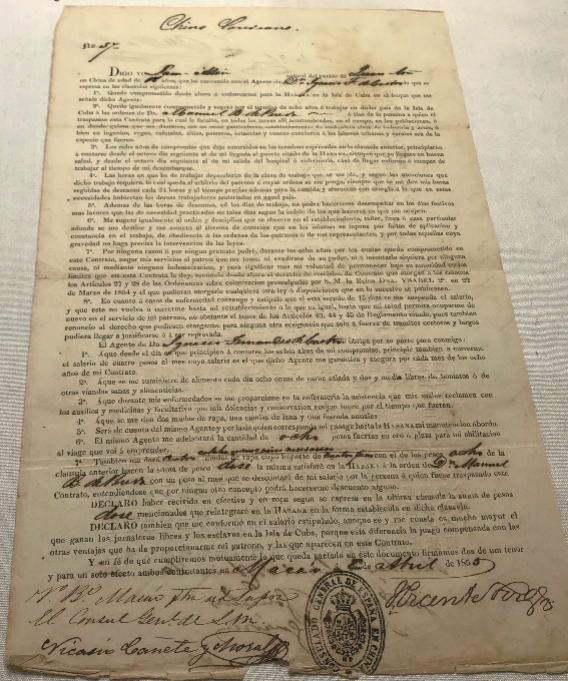

Document 3&4
Statement to Abide the Cuba Law (front and reverse side)
This is a document stating that the individual would abide by the laws of Cuba. This was not written by Lin-Sun but by the agent as it is believed that Lin-Sun was illiterate. Sometimes the documents were written by the coolies.


Document 5
Reference Letter from Employer
This is a statement of the work performed by a coolie.It says Lin-Sun worked on a farm and describes his work performance. Documents like this served as work references for those looking for jobs after they finished their eight-year contract.
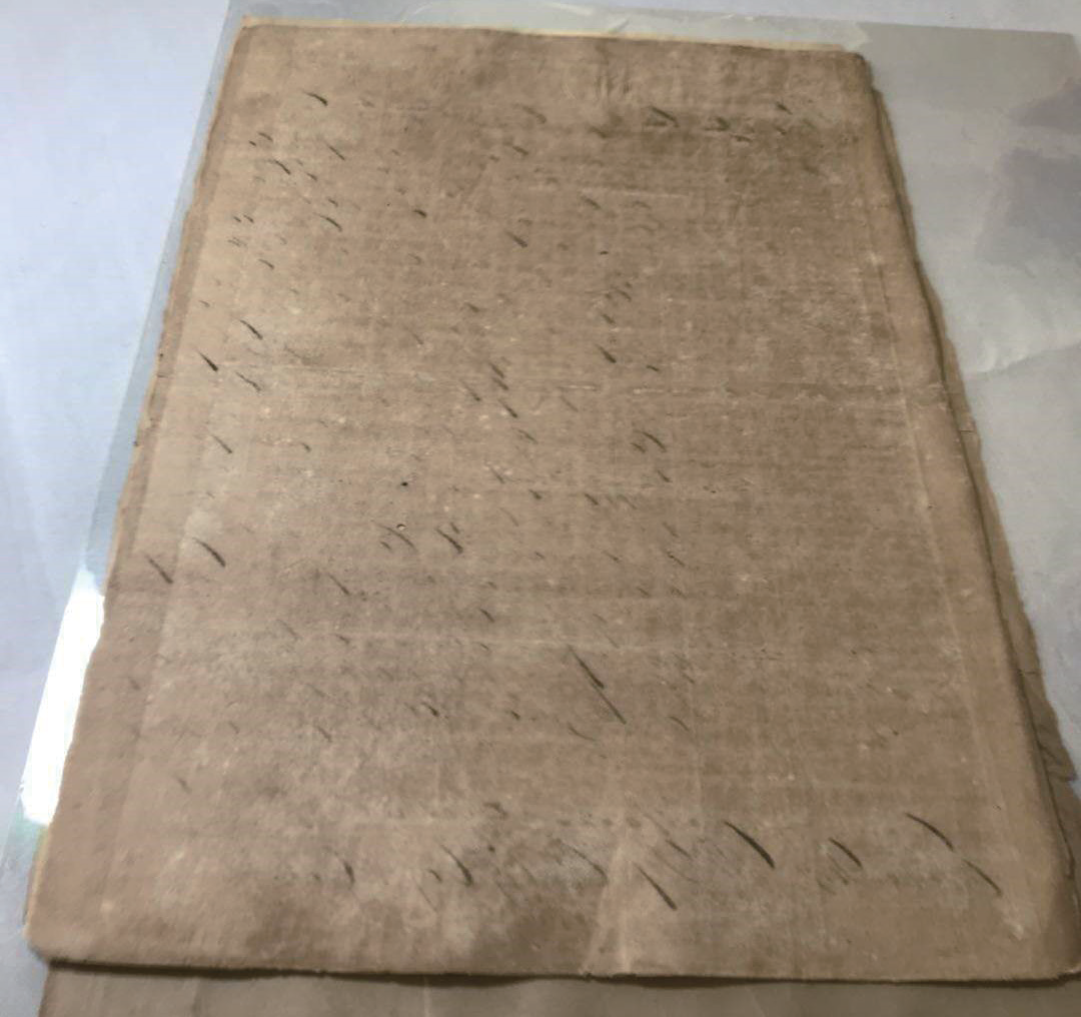
Document 6
The Baptismal Certificate
The document describes the baptism of a 27-year-old Chinese man and gives him the name Mr. Laureano Gaston. This was recorded in Book number 8 page 170, entry number 1454. The official seal was from 1862 to 1863, signed by the Priest (Cara) Don Jose Casimir Martinez.Baptismal certificates were typically issued after the eight-year contract was fulfilled. This document is dated 1863,meaning the individual's eight-year contract would have begun in 1855. Religion was a large part of the lives of the Chinese in Cuba in the 19th century.

Document 7
Petition to "Captain General" to receive his nationalization identification
This is a petition the individual made to the "Captain General” to receive the Cuban identification document (the "cedula"). This was made after the eight-year contract was fulfilled and after the individual was known to have "embraced" the Catholic religion.

Document 8
Cedula
The Cedula was issued in 1862, saying that the 27-year-old single Chinese man Laureano could stay in Cuba and work legally. This was a Cuban identification document. The document is called a "cedula." It is different from the identification issued by the Chinese Consulate in Havana.

This rare document sheds some light on the coolie system. The document was purchased at auction. It includes six sheets, with a total of eight pages. The first sheet is printed on both sides and is an official contract. The first side is in Chinese and was done with hot lead typesetting. The back side was written in Spanish and included the signatures and seals of officials. The Chinese contract was dated February 15 of the fifth year of the reign of the Xianfeng Emperor. The worker was Lin-Sun,who was eighteen years old at the time and born in Songhua in Guangdong province. The agent who signed the contract and his employer are named. The contract stated that work would begin eight days after arrival in Havana and last for eight years. The type of work was up to the employer, according to Spanish Imperial Law signed on March 22, 1854. Those who required medical treatment should be treated until recovery, according to the contract. It also states that the salary should not be cut unless sick time lasted more than 15 days. Workers did not have to work on Sundays and during sick time. Workers would be given two meals a day including 8 ounces of salted meat and two and a half pounds of grains. The agent was supposed to give 8 yuan to each potential worker to shop for necessities.Before departure, four pieces of clothing and 4 yuan would be given to each individual and 12 yuan would be deducted from the salary in the future for this. However, the deduction should not be more than one yuan per month. The monthly salary would be 4 yuan. However, we know that, in reality, workers were often given little or no medical care, worked around the clock and while ill, and were given very little food, clothing, or necessities. Oftentimes, workers were not paid and they were forced to work beyond the years in their contract.

It is important to point out that the official seal was used throughout the document.
The document shows how an illiterate 18-year-old man named Lin Sun completed the work in the contract after 8 years. He gained the trust of his employer and the pastor. He was able to continue to work and stay in the country with the given name Laureano.
Re-examining the complete document gives us another glimpse of China and the world more than a century and a half ago, and also lets us know how difficult things are.Even in the United States, the ban on the slave trade, which was passed in 1807, was not implemented until 1866. The price paid by China and the Chinese people during this period for survival and freedom cannot be overstated. After feeling deeply, write down this matter also for our Chinese nation common encourage.
Based on an incomplete document from 1856 (number 87 document), two years after the Macau contract described in this article was signed, it appears that the most important purchaser of coolie labor was the Campbell family. The Campbells were one of the biggest plantation owners in Cuba, Puerto Rico, the West Indies, and Guyana. For centuries, the Campbells were a major clan in the Scottish Highlands. According to the records of John Campbell Sr., we know that they owned the largest fleet of cargo ships in Hong Kong ranging in size from ten tons to 150 tons. These ships sailed around the world carrying spices, incense, tobacco, sugar, herring, tea, silk, and opium. They also traded slaves, coolies and glass beads (trade beads were used as decorations and money and they were given to Africans, Amerindians and Taiwanese aborigines in exchange for goods, slaves, and services). The ships also sold salted fish for food, making a fortune all over the world.
After signing contracts, laborers would be transferred from Macau to Hong Kong and then shipped to Cuba. There was no Suez Canal at that time, so they could only reach the Atlantic via the South China Sea, Indian Ocean and the Cape of Good Hope, and then go north to Cuba and other islands in the Caribbean Sea. Slaves and coolies were often not treated like humans. If they passed away, they would be thrown into the sea and eaten by sharks. As for those who survived, they would be auctioned off.

The antique African trade beads
Trade beads were used to purchase African resources by Europeans.These beads were made at a low temperature and they were decorative. They were used between the 16th and the 20th century as tokens that were exchanged for goods,slaves, and services.
The story of Lin-Sun revealed in the contract and later documents suggests that he was luckier than most of the coolies that were transported to the Caribbean. The illiterate young man from China survived the eight years of hard labor on a farm and was able to gain the trust of his employer, church, and local government officials. The "Cedula" that was issued after his eight years of labor were completed gave him the right to stay and work in Cuba permanently.
Most of the coolies were not as lucky as Lin-Sun, as 90 percent of them died before they could complete the eight years of work. They faced inhumane conditions from the moment they boarded the ships, where they were treated as cargo, chained, and given very little food and water.
History is full of stories like that of coolies, where systematic exploitation and abuse of an entire group of people occurs.
